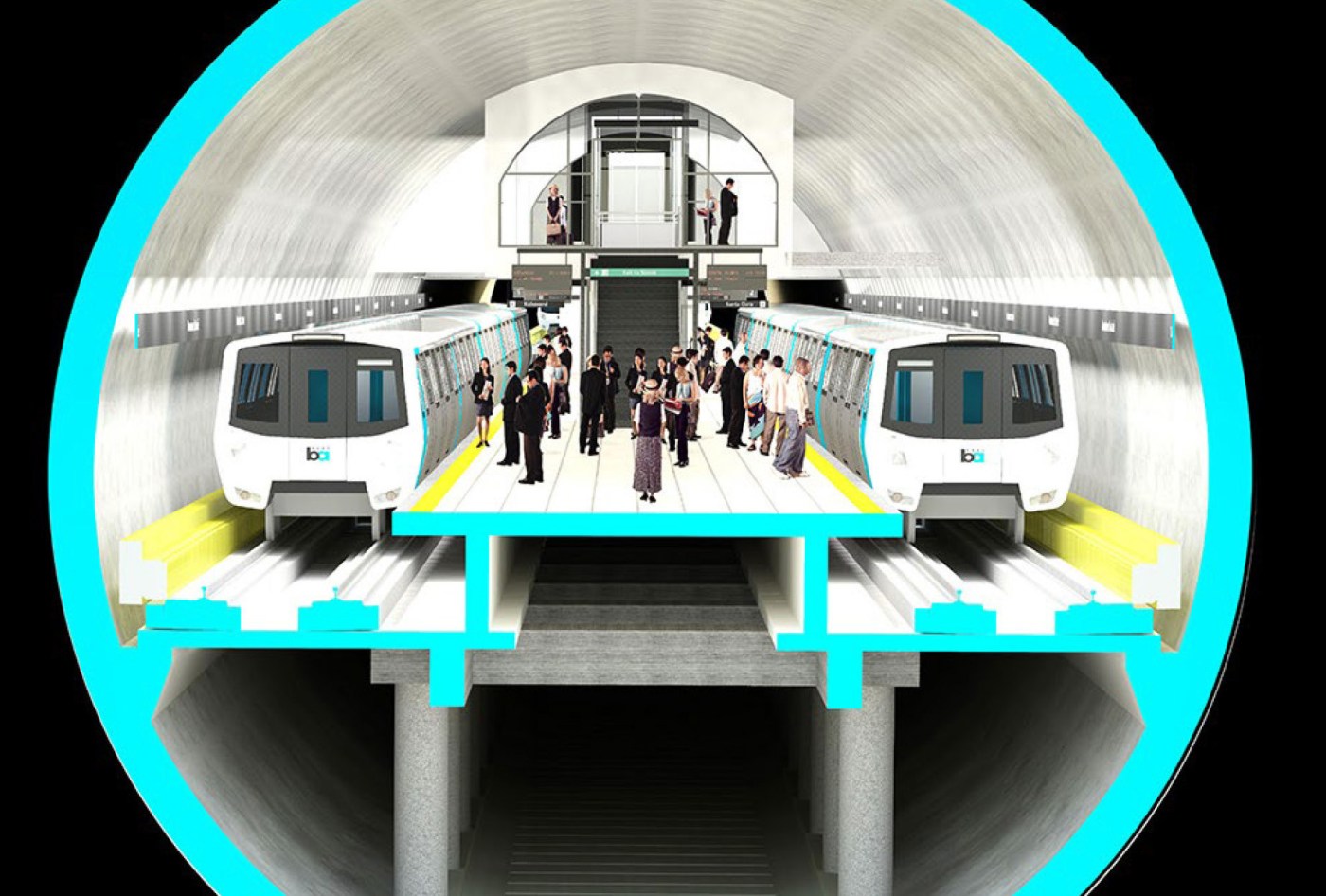Later this year, Bay Area residents should learn whether the federal government will fund about half the cost of the $12.8 billion BART extension through San Jose.
Until that happens, the Santa Clara Valley Transportation Authority will not seek independent analysis that addresses valid concerns about its project — such as the controversial tunneling plan, revenue projections during an era of shifting commute patterns, and a segment that duplicates existing Caltrain service.
Map of the planned San Jose BART extension. (Source: Valley Transportation Authority)
It’s become clear that VTA leaders, despite calls from the community, are unwilling to risk the federal money by releasing any review that shows weaknesses in their plans for the six-mile extension from Berryessa/North San Jose station through San Jose and up to Santa Clara.
They figure that, with the uncertainty of the presidential election, this might be the last chance in the foreseeable future to secure sufficient federal funding. Serious independent review of the project would only occur if the federal government doesn’t provide sufficient money and VTA is forced to consider trimming the budget.
Only then might the transit authority commission an independent review of the tunnel design, reconsider the duplicative last link, from downtown San Jose to Santa Clara, or look to trim stations from the project.
A lot has changed since the project was first conceived. In just the last three years, the estimate for the four-station, mostly underground extension has more than doubled, from $5.6 billion to $12.8 billion, and the completion date has been kicked back more than a decade, from 2026 to 2037.
Those changes should have triggered serious reexamination of the project to determine if it’s the best way to provide transportation to and from the South Bay and, if so, whether there’s a more cost-effective way to build it.
As we editorialized in 2021, 2022 and 2023, as costs keep rising and VTA transparency remains abysmal, the BART extension should be subjected to complete and rigorous independent review.
But it’s become clear that VTA leaders are not about to let that happen. Politics rather than good policy analysis is driving this train. Despite growing demands from some savvy transportation advocates, VTA, an organization with a history of public deceit, is once again slow-walking transparency.
For example, consider the roughly five miles of tunneling. The transit agency has migrated from the original traditional twin-bore design to a single bore with platforms stacked one above the other, and then to a single bore containing the two tracks on the same level.
The change has increased the size of the tunnels from 20 feet each in the twin-bore design to 53 feet in diameter for the most-recent single-bore option. Critics say that will drive up the cost and extend the construction time.
The platforms, originally planned for 50 feet underground, are now expected to be 80 feet below the street. And the width of the platform was reduced from 28 feet to 22 feet, which will pack people much more tightly if there’s a big crowd.
Does all of that make sense from a construction, cost or operational perspective? Agency officials are trying to portray to the public a sense of legitimate inquiry but convey to the federal government reassurance that nothing is going to change.
In a statement this week in response to questions from this news organization, a VTA spokesperson said the agency will “update the previous estimates of costs, risks and impacts of the twin-bore design.”
That will take three months, starting in June 2024, according to the statement. “Meanwhile, we continue to finalize our single-bore design and secure” the federal funding.
In other words, the exercise won’t change any plans for the project. And it will not be done by an independent outside consultant, which could risk a report VTA wouldn’t want out this year.
Related Articles
San Jose BART extension to receive $500 million in upcoming federal budget
BART will get a decade of use out of cars meant for San Jose extension on VTA’s dime
Opinion: Tom McEnery, Lewis Wolff call San Jose BART extension ‘municipal madness’
Borenstein: $12.8 billion San Jose BART extension plan should be scrutinized. Here’s how.
Will VTA change its tunnel design for the San Jose BART extension after completing a new cost estimate?
It’s not only the tunneling plan alternatives that will escape independent scrutiny. Don’t expect a meaningful review of the financial or ridership projections. And no one at VTA is about to consider mass transit alternatives that might be more cost-effective.
If this were a project solely funded by the federal government, there might be some parochial justification for local officials’ quest to grab as much money as possible. But much of the other half of the funding will come from local sales tax revenues.
To the extent that money for the extension is not efficiently spent, funds will be lost for other transportation projects in Santa Clara County that are waiting in line.
Years from now, if the project is completed, residents of the region are likely to look back and ask whether this was the best we could do. Sadly, we will probably never know because the politics of the moment have made meaningful inquiry nearly impossible.












